The AMD Ryzen 3 1300X and Ryzen 3 1200 CPU Review: Zen on a Budget
by Ian Cutress on July 27, 2017 9:30 AM EST- Posted in
- CPUs
- AMD
- Zen
- Ryzen
- Ryzen 3
- Ryzen 3 1300X
- Ryzen 3 1200
Rise of the Tomb Raider
One of the newest games in the gaming benchmark suite is Rise of the Tomb Raider (RoTR), developed by Crystal Dynamics, and the sequel to the popular Tomb Raider which was loved for its automated benchmark mode. But don’t let that fool you: the benchmark mode in RoTR is very much different this time around.
Visually, the previous Tomb Raider pushed realism to the limits with features such as TressFX, and the new RoTR goes one stage further when it comes to graphics fidelity. This leads to an interesting set of requirements in hardware: some sections of the game are typically GPU limited, whereas others with a lot of long-range physics can be CPU limited, depending on how the driver can translate the DirectX 12 workload.
Where the old game had one benchmark scene, the new game has three different scenes with different requirements: Geothermal Valley (1-Valley), Prophet’s Tomb (2-Prophet) and Spine of the Mountain (3-Mountain) - and we test all three. These are three scenes designed to be taken from the game, but it has been noted that scenes like 2-Prophet shown in the benchmark can be the most CPU limited elements of that entire level, and the scene shown is only a small portion of that level. Because of this, we report the results for each scene on each graphics card separately.
Graphics options for RoTR are similar to other games in this type, offering some presets or allowing the user to configure texture quality, anisotropic filter levels, shadow quality, soft shadows, occlusion, depth of field, tessellation, reflections, foliage, bloom, and features like PureHair which updates on TressFX in the previous game.
Again, we test at 1920x1080 and 4K using our native 4K displays. At 1080p we run the High preset, while at 4K we use the Medium preset which still takes a sizable hit in frame rate.
It is worth noting that RoTR is a little different to our other benchmarks in that it keeps its graphics settings in the registry rather than a standard ini file, and unlike the previous TR game the benchmark cannot be called from the command-line. Nonetheless we scripted around these issues to automate the benchmark four times and parse the results. From the frame time data, we report the averages, 99th percentiles, and our time under analysis.
For all our results, we show the average frame rate at 1080p first. Mouse over the other graphs underneath to see 99th percentile frame rates and 'Time Under' graphs, as well as results for other resolutions. All of our benchmark results can also be found in our benchmark engine, Bench.
#1 Geothermal Valley
MSI GTX 1080 Gaming 8G Performance

1080p

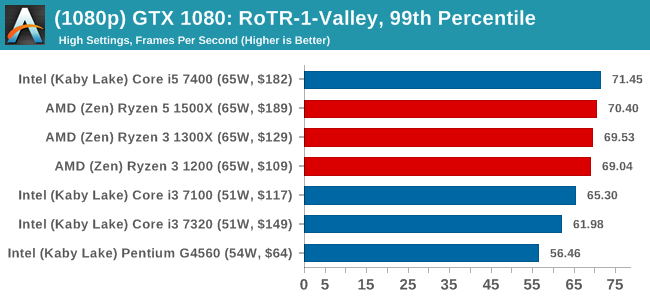
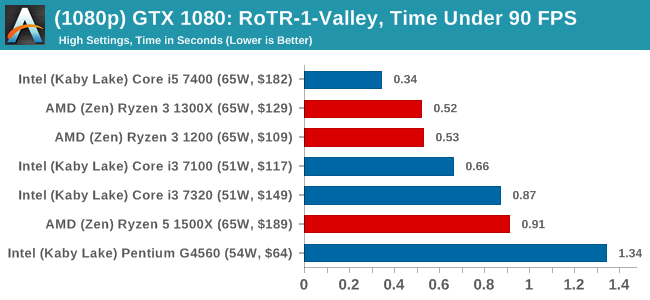
4K
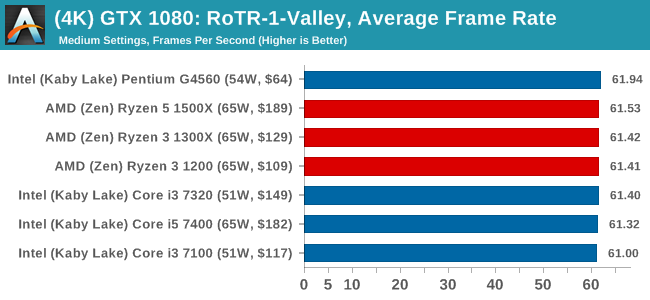
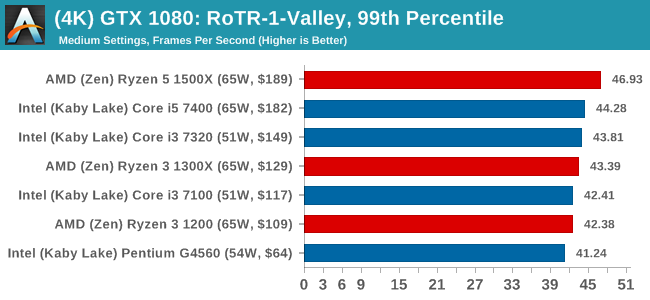
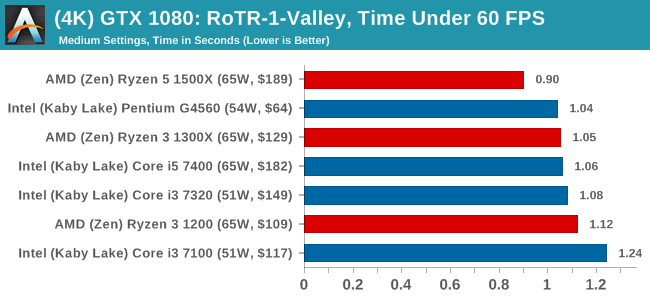
ASUS GTX 1060 Strix 6GB Performance

1080p

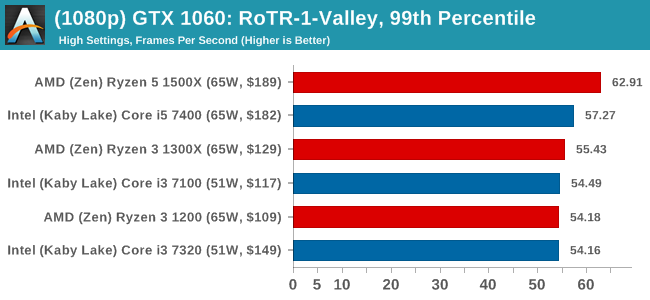
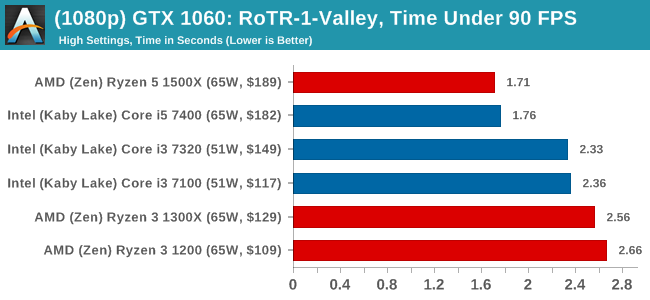
4K
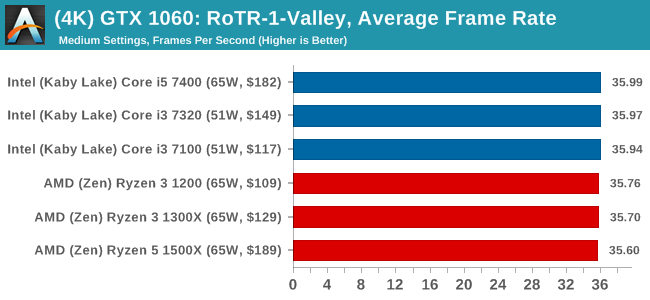

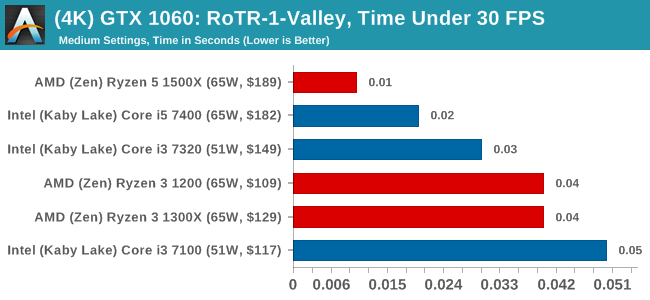
Sapphire R9 Fury 4GB Performance
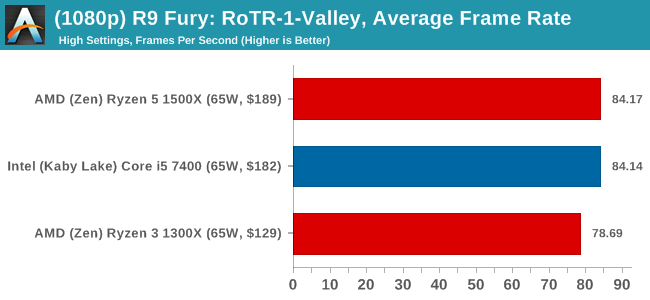
1080p

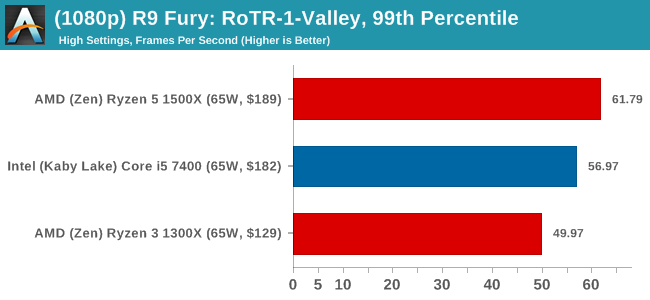
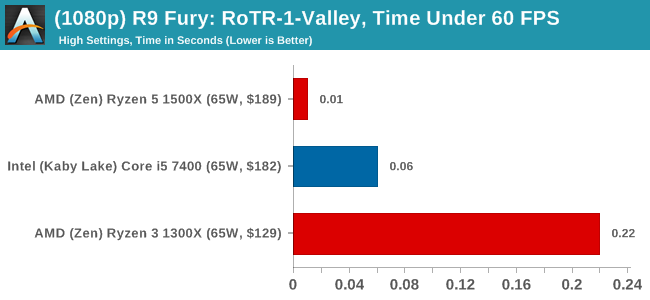
4K
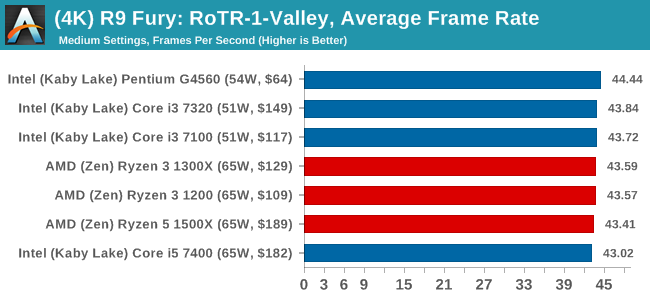
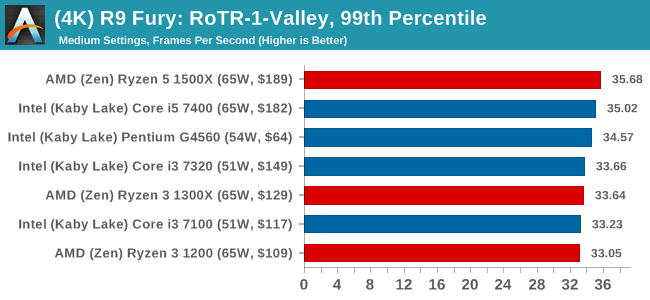
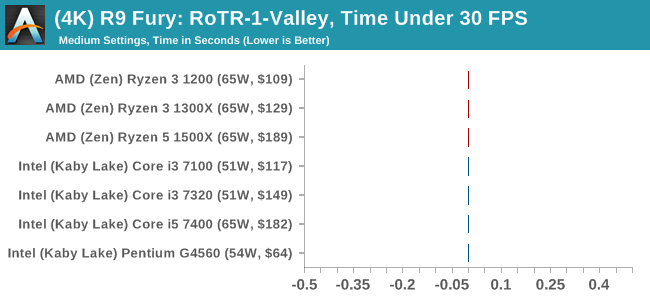
Sapphire RX 480 8GB Performance
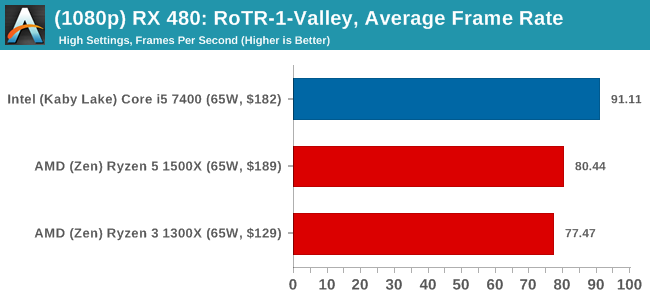
1080p


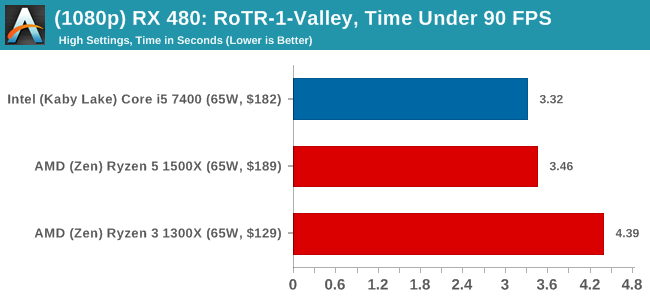
4K

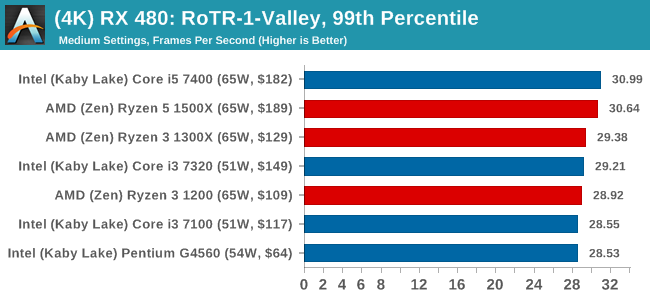
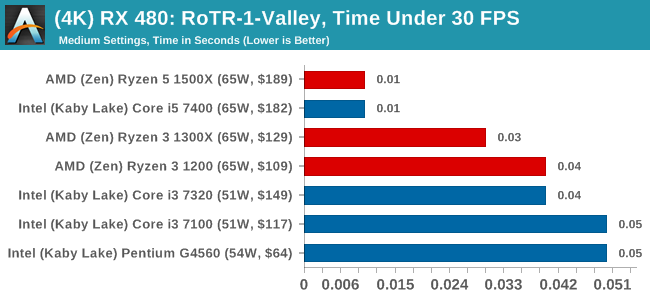
Geothermal Valley had some issues in our benchmark test suite, where the 1080p benchmark wouldn't output frame time data for the first section. The issue has been debugged from our end and future reviews should contain all the data.
#2 Prophet's Tomb
MSI GTX 1080 Gaming 8G Performance
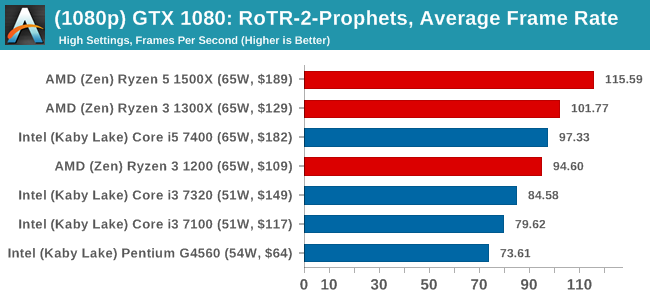
1080p



4K
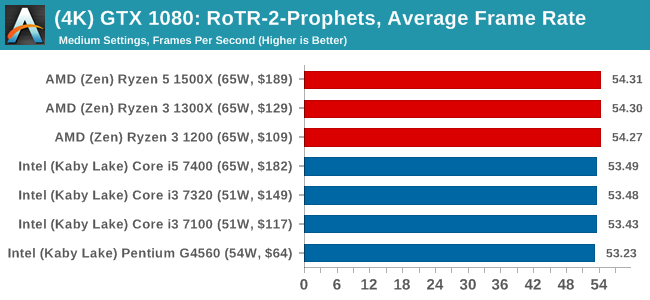
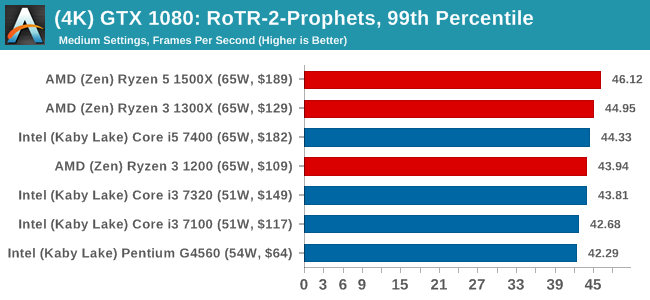
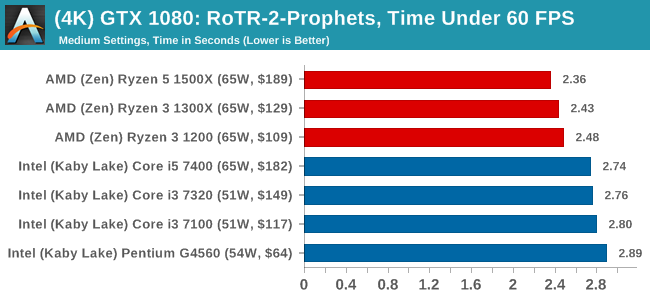
ASUS GTX 1060 Strix 6GB Performance
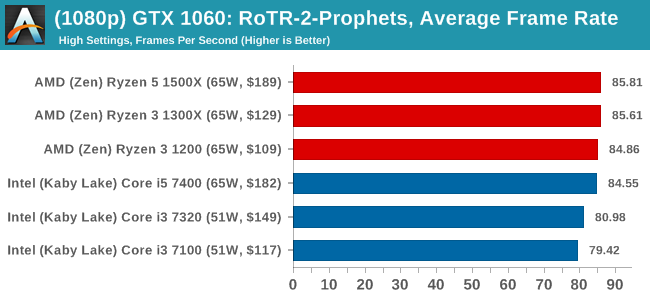
1080p

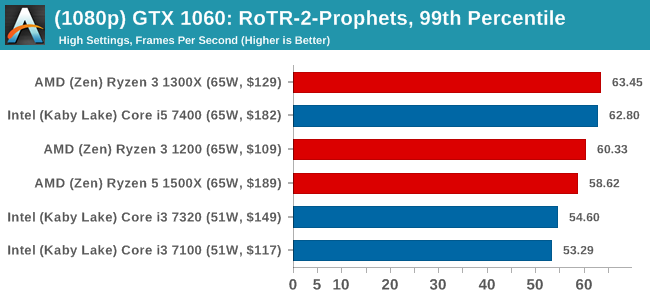

4K
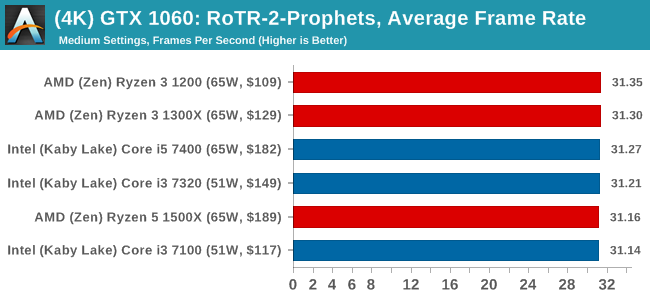
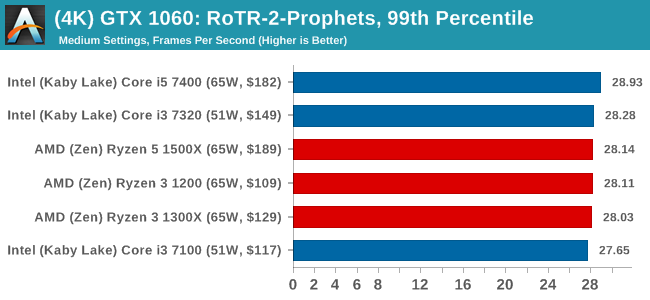

Sapphire R9 Fury 4GB Performance
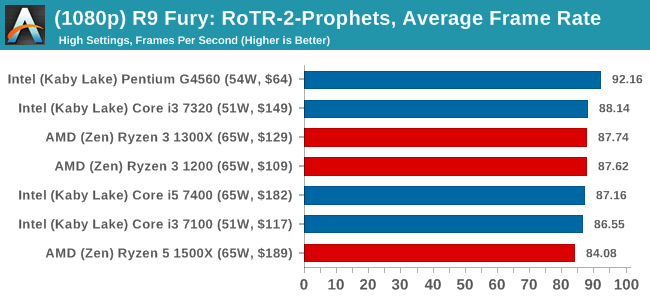
1080p

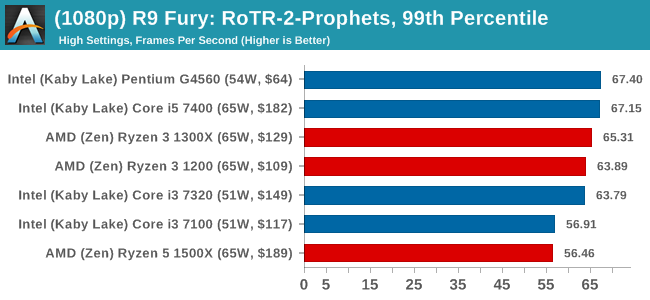

4K
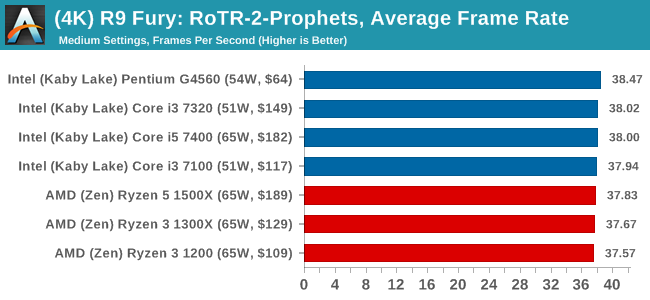

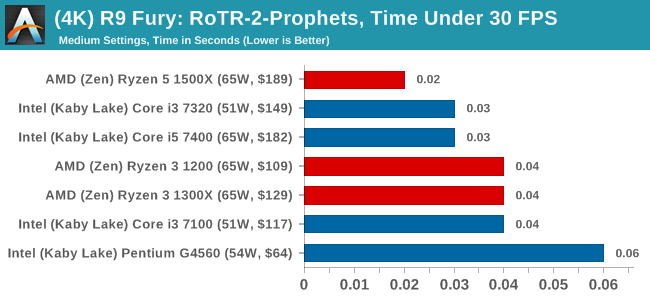
Sapphire RX 480 8GB Performance
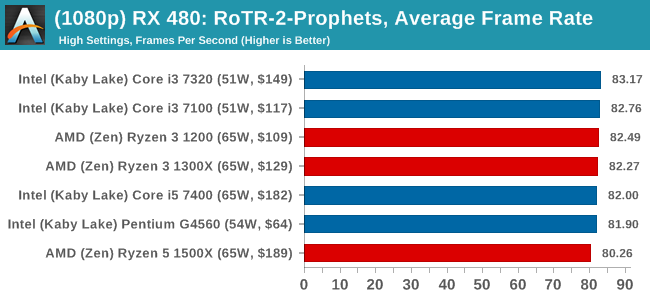
1080p

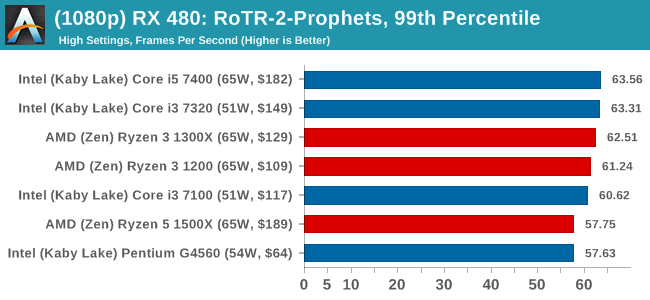
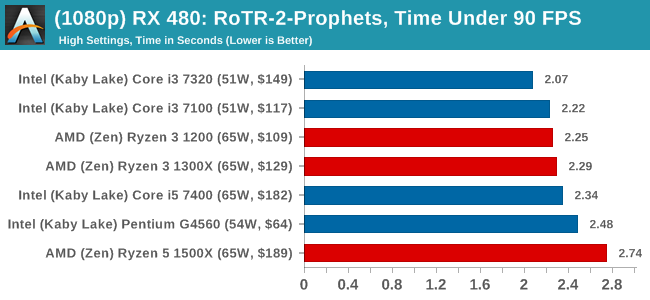
4K
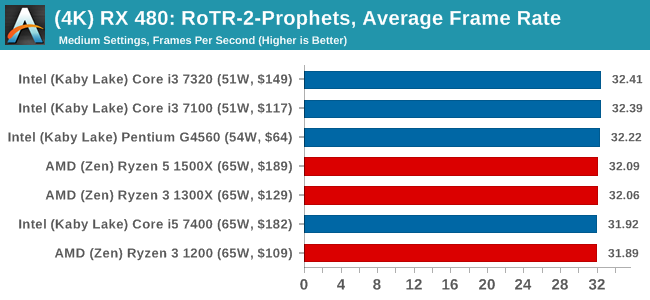

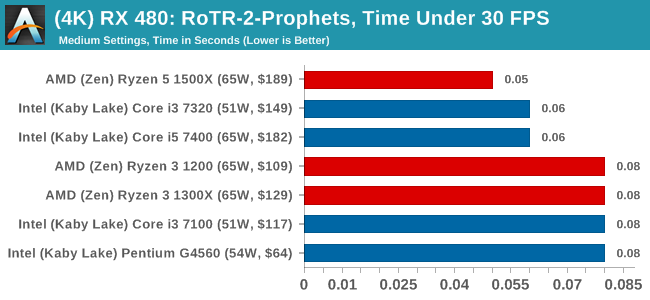
#3 Spine of the Mountain
MSI GTX 1080 Gaming 8G Performance
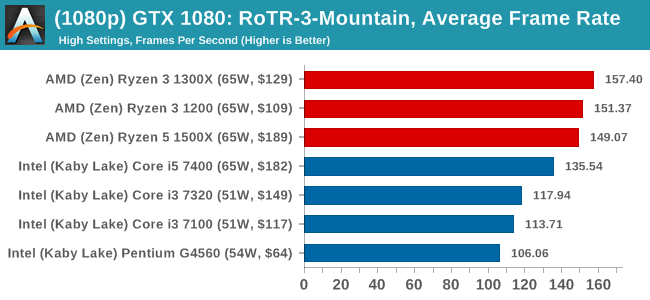
1080p

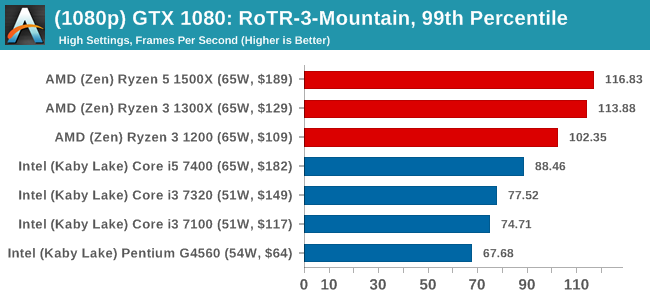
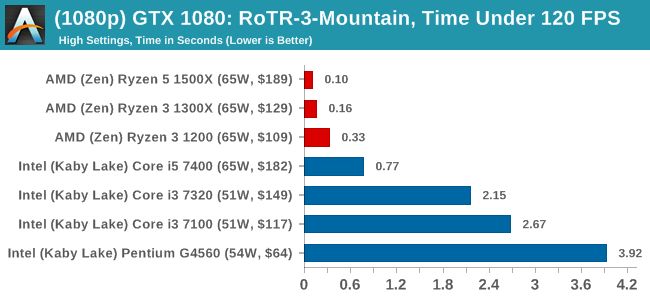
4K
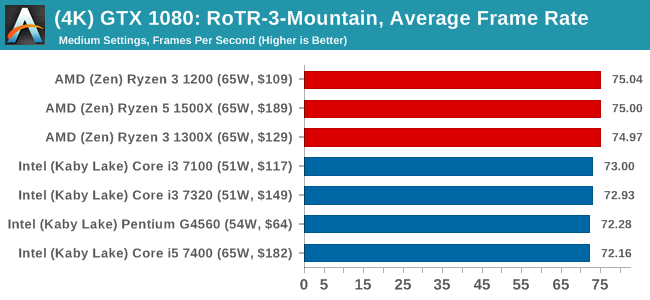


ASUS GTX 1060 Strix 6GB Performance
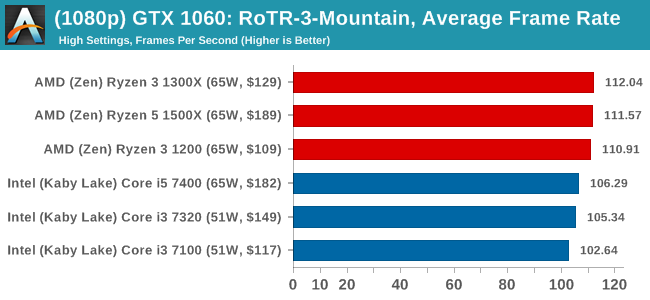
1080p


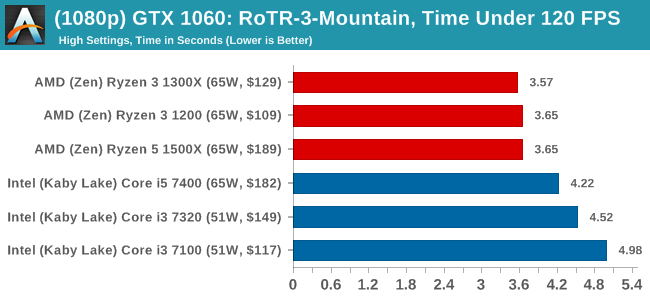
4K
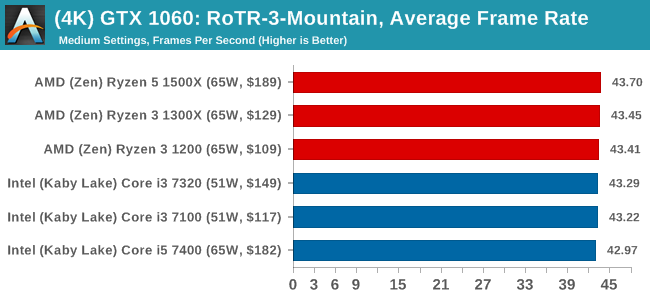
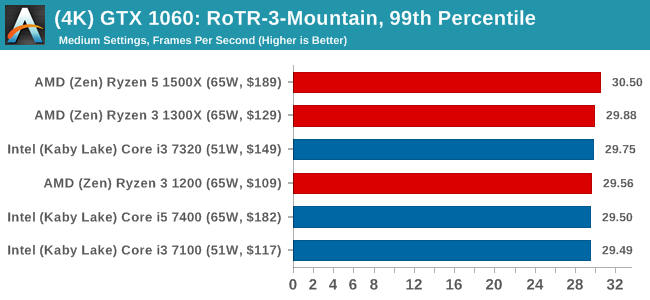

Sapphire R9 Fury 4GB Performance
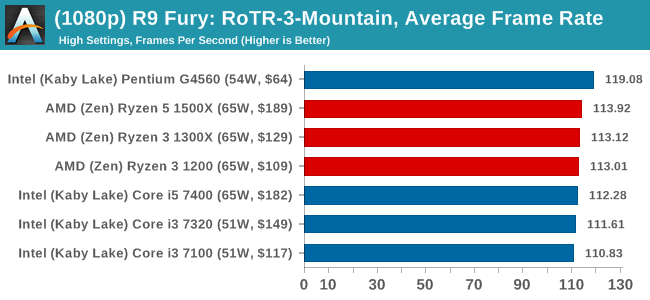
1080p

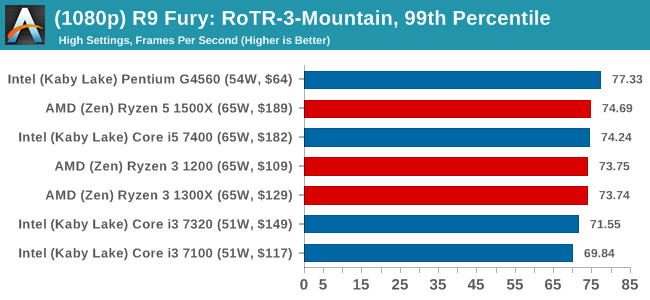

4K
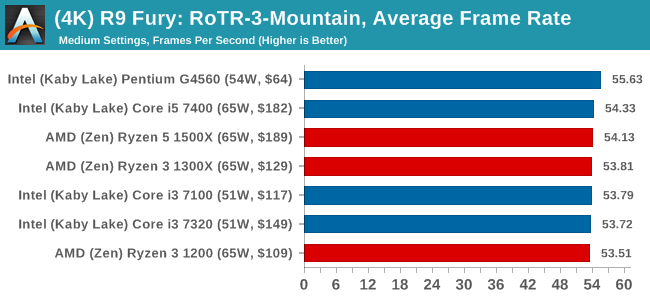
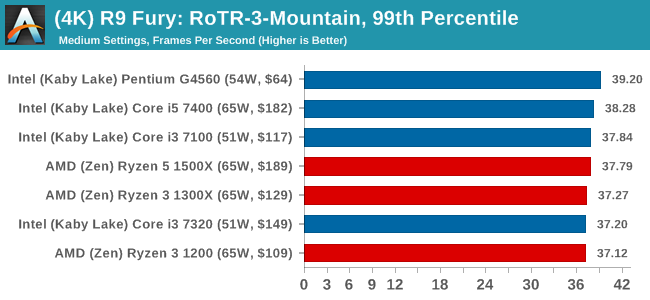
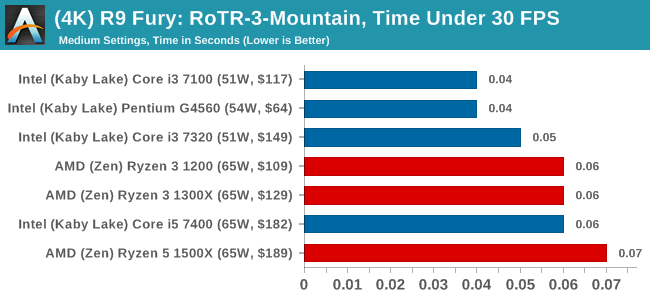
Sapphire RX 480 8GB Performance
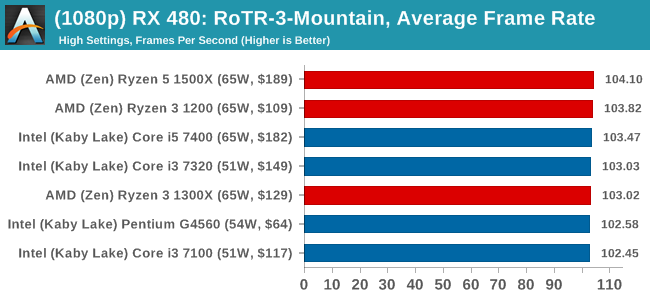
1080p



4K
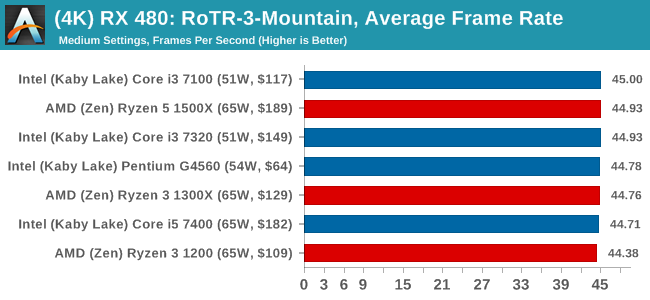
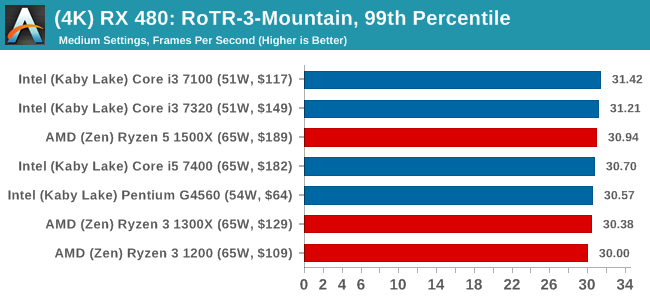



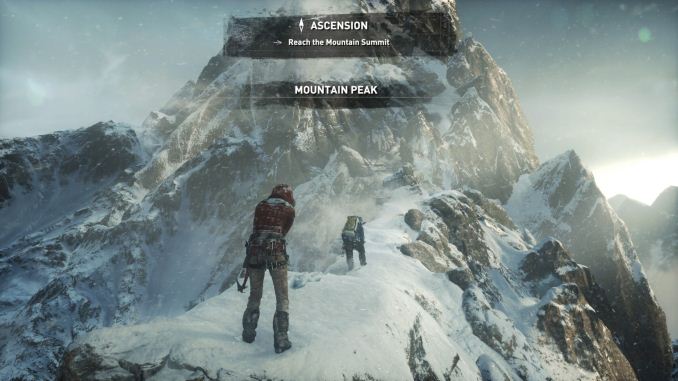












140 Comments
View All Comments
ampmam - Thursday, July 27, 2017 - link
Great review but biased conclusion.tvdang7 - Thursday, July 27, 2017 - link
No overclock?Oxford Guy - Thursday, July 27, 2017 - link
No, just a RAM underclock.zodiacfml - Thursday, July 27, 2017 - link
overclocking tests on the ryzen 3 1200 please. the only weakness of the chip is for non-gaming or htpc usage as it will require purchasing a discrete graphics card. otherwise, it presents good value for most things like gaming and multi-threaded applications, add overclocking, and it gets even better.kaesden - Thursday, July 27, 2017 - link
one thing to not overlook with the ryzen 1300x is the platform. Its competitive with budget intel offerings and can take a drop in 8 core 16 thread upgrade with no other changes except maybe a better cooling solution, Something intel can't match. Intel has the same "strategy" at their high end with the new X299 platform, but they seem to have lost focus of the big picture. The HEDT platform is too expensive to fit this type of scenario. Anyone who's shelling out the cash for a HEDT system isn't the type of budget user who is going to go for the 7740x. they're just going to get a higher end cpu from the start if they can afford it at all, not to mention the confusion about what features work with what cpu's and what doesn't, etc...TLDR; AMD has a winner of a platform here that will only get better as time goes on.
peevee - Thursday, July 27, 2017 - link
From the tests, looks like Razen 3 does not make much sense. Zen arch provides quite a boost from SMT in practically all applications where performance actually matters (which are all multithreaded for years now), and AMD artificially disabled this feature for that stupid Intel-like market segmentation.Also I am sure there are not that many CPUs where exactly 2 out of 4 cores on each CCX is broken. So in effect, in cases like one CCX has 4 good cores and another has only 2 they kill 2 good cores, kill half of L3, kill hyperthreading...
It would be better to create a separate 1-CCX chip for the line, which would have much higher (more that twice per wafer) yield being half the size, and release 2, 3 and 4 core CPUs as Ryzen 2, 3 and 4 accordingly. With hyperthreading and everything. I am sure it does not cost "tens of millions of dollars" to create a new mask as even completely custom chips cost less, let alone that simple derivative.
Oxford Guy - Thursday, July 27, 2017 - link
"It would be better to create a separate 1-CCX chip for the line"Or, it could be explained by this article why AMD can't release a Zen chip with 1 CCX enabled and one disabled. Instead, we just get "obviously".
silverblue - Friday, July 28, 2017 - link
He did explain it. Page 1.Oxford Guy - Saturday, July 29, 2017 - link
Where?All I see is this: "Number 3 leads to a lop-sided silicon die, and obviously wasn’t chosen."
That is not an explanation.
peevee - Tuesday, August 1, 2017 - link
That is still be half the yield per wafer compared to a dedicated 1-CCX line. Twice the cost. Cost matters.And the 3rd chip must be 1CCX+1GPU. SMT must be on everywhere though, it is too good to artificially lower value of your product by disabling it by segmentation.